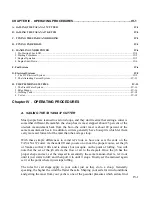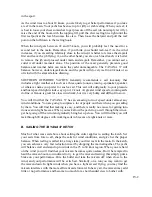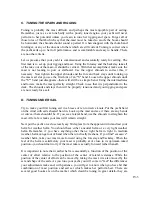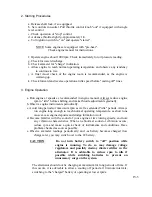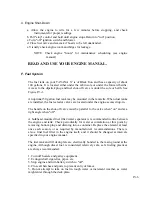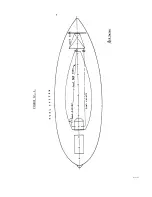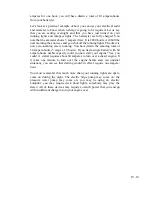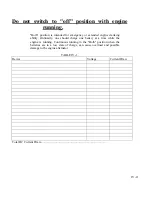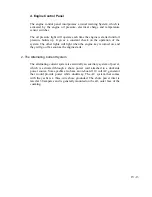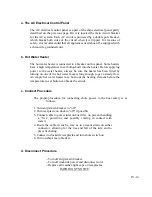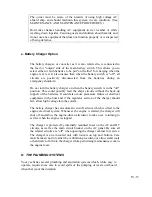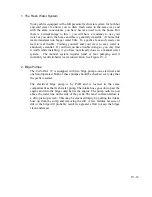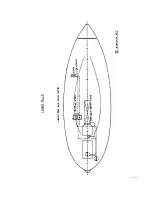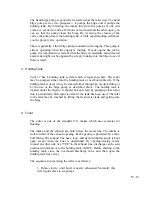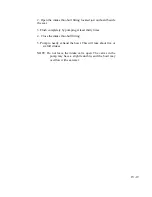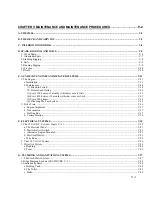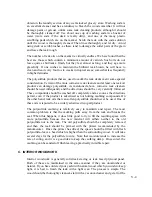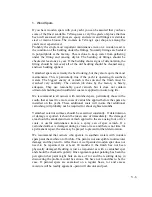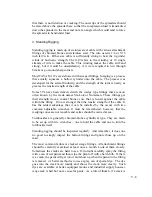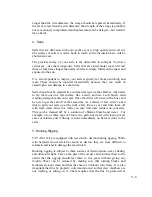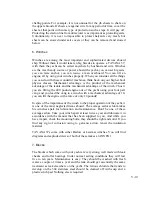
IV-15
The owner must be aware of the hazards of using high voltage AC
aboard ship, and should maintain this system in safe condition. (See
MAINTENANCE AND MAINTENANCE PROCEDURES.)
Don't take chances handling AC equipment in wet weather or while
washing down topsides. Caution guests and children about hazards, and
do not use any equipment that does not function properly or is suspected
of being defective.
e. Battery Charger Option
The battery charger, or converter as it is also referred to, is connected to
the feed or "output" side of the main battery switch. This allows you to
select either or both batteries to be put "on the line" for charging when the
engine is at rest. It also insures that, when the battery switch is "off", all
circuits are positively disconnected from the batteries during an
emergency shutdown.
Do not turn the battery charger on when the battery switch is in the "off"
position. This could possibly feed the ship's circuits without the back-up
support of the batteries. It could also cause premature failure of electrical
equipment in the boat and if the regulator section of the charger should
fail, allow high voltage into the system.
The battery charger has an automatic cut-off circuit, which is wired to the
engine electrical system. Whenever the engine is started, the charger will
shut off and allow the engine-driven alternator to take over, returning to
service when the engine is stopped.
The charger is protected by internally mounted fuses on the AC and DC
circuits, as well as the main circuit breaker on the AC panel. Be sure all
the related circuits are "off" when opening the charger cabinet for service.
The charger is an air-cooled unit with louvers on top and bottom. Care
must be taken not to restrict the ventilation provided, nor allow small tools
or hardware to fall into the charger while performing maintenance work in
the engine room.
H. THE PLUMBING SYSTEMS
Your yacht has several plumbing and sanitation systems which, while easy to
operate, require some care to avoid spills or the pumping of waste overboard
when that is not the intention.
Summary of Contents for 37
Page 1: ...Chapter I OPERATIONS AND MAINTENANCE MANUAL Chapter 1...
Page 7: ...I 6...
Page 8: ...I 7...
Page 9: ...I 10...
Page 10: ...I 11 BARIENT WINCH 22 WINCH ASSEMBLY...
Page 14: ...II 3 Polars for Tayana37 Cutter...
Page 18: ...II 7...
Page 45: ...IV 8...
Page 54: ...IV 17...
Page 69: ...V 13...
Page 76: ...V 20...
Page 80: ...V 24 moisture eliminating product...
Page 81: ...V 25...

